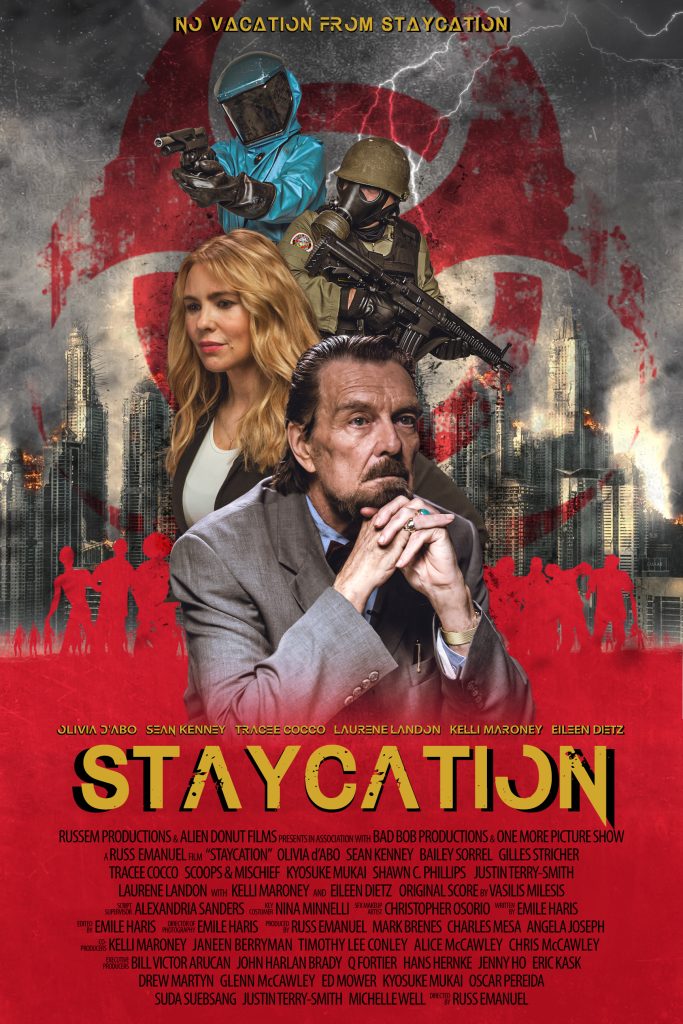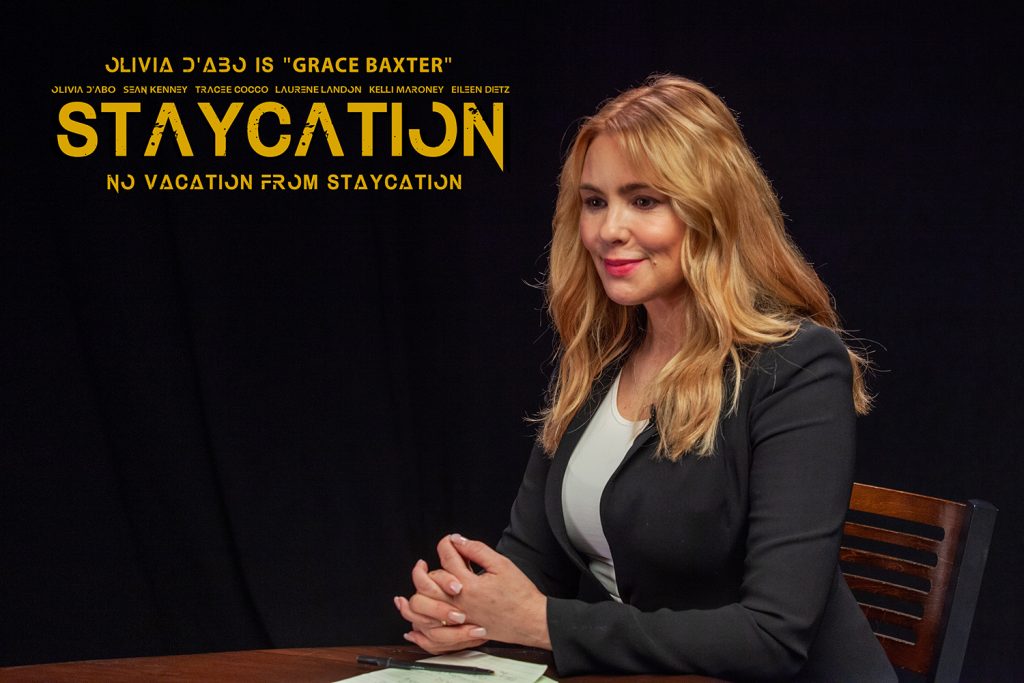A horror comedy that combines the struggles of people dealing with everyday life while navigating a world in lockdown. This is Russ Emanuel’s darkly comedic take on pandemic life, Staycation.

“Staycation” is a film created during the pandemic era that arguably arrives a little bit late, but it remains a film well executed within the environment it shows us. Director Russ Emanuel’s feature does manage to be different despite its repetitive nature, yet it is also an occasionally bewildering experience and visual experiment. By avoiding traditional narrative structures, and opting for a fragmented, multi-view approach, the film mirrors the broken reality of what was our lockdown existence.
The film is visually dominated by talking heads, direct pieces to camera, Zoom-esque conversations, split screens, and claustrophobic close-ups, and while it tries to create an undeniably authentic feeling of the lived experience of pandemic-era communication, the relentless barrage of digital interfaces can become visually exhausting. Its most striking asset and also its biggest potential stumbling block is the Robocop type satirical adverts scattered throughout the 94-minute run time. They are all delivered in distinctive styles and are very hit and miss, some give us very bright and garish colour schemes that pop in comparison to the rest of the film, while others are simply basic parodies of cable tv ads. Around these sketch-like scenes, Emanuel attempts to capture the work that virologists did to help the population as well as the absurdity of what virtual connection around this time looked like, capturing the intimacy and isolation of screen-related conversations.
Humour is deployed as a coping mechanism, an often dark, commentary on the absurdities of lockdown life. While not consistently laugh-out-loud funny, the film’s satirical targets from zombie films to the performative anxieties of social distancing to the dullness of virtual meetings are knowingly familiar. This is not a comedy designed for belly laughs but more reflective of a shared cultural moment.

Emanuel weaves horror elements into the narrative, injecting moments of unease into the trite personal stories, while thanks to some fine make-up work, an early visual effect is quite striking. The film’s ability to transition from comedic observation to unsettling dread is a testament to Emanuel’s directorial ambition. The horror sequences are few and far between but do provide some unsettling visuals and disorienting sound design, which helps effectively capture the anxiety of a pandemic.
The ensemble cast features many unfamiliar faces but also gives us plenty of genre veterans and recognisable names. Olivia D’Abo, Kelli Maroney, Laurene Landon, and Eileen Dietz, lend a sense of gravitas and nostalgia to the proceedings. The majority of their performances are in small supporting roles but the professionalism and experience they bring shines through, with all of them giving very measured performances that provide a grounding point within the film’s chaotic structure. Using genre icons adds a welcome sense of history, and their presence elevates the film, they add a layer of nostalgia and some knowing winks to the audience.
Staycation is, basically, an experimental comedy film, which avoids conventional narrative in favour of a more practical approach which will undoubtedly alienate some viewers. The persistent close ups and video calls, coupled with the film’s tonal shifts, can make for a challenging viewing experience. However, for those with a little more patience “Staycation” offers a unique and horror-based reflection on a period of unprecedented disruption.

While its ambitions may occasionally outstrip its execution, Staycation remains a fun cinematic document of filmmaking during the pandemic era. Its willingness to experiment with form and genre, coupled with its strong ensemble cast, makes it a worthwhile, if unconventional, viewing experience.
Leave a Reply